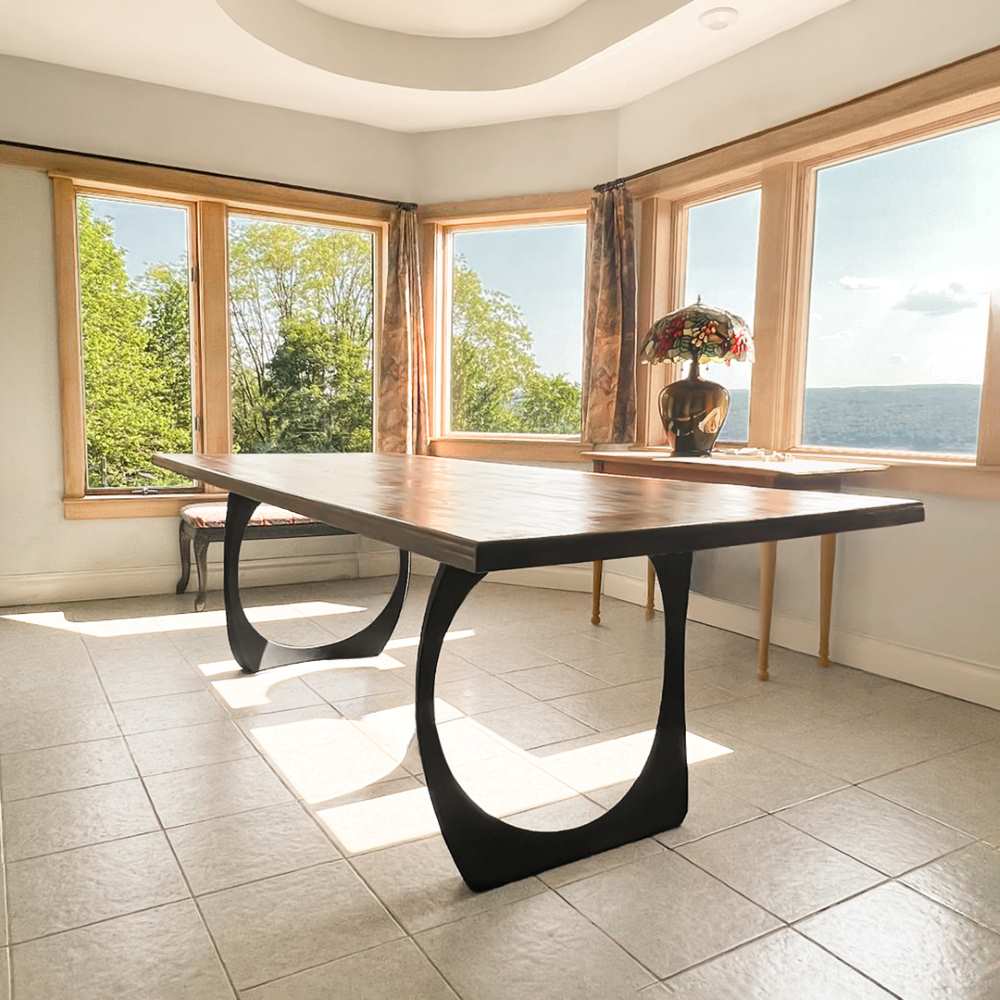Why Custom Dining Room Table Legs Are Worth the Investment
Why Custom Dining Room Table Legs Are Worth the Investment
Blog Article
From Traditional to Modern: Locate the Ideal Dining-room Table Legs for Your Style
While classic designs such as cabriole and transformed legs evoke a sense of ageless refinement, contemporary designs like barrette and geometric options provide a possibility for striking aesthetic interest. As you think about these aspects, the inquiry remains: how can you perfectly incorporate these varied leg designs to develop an unified dining experience?
Understanding Table Leg Styles
The variety of dining room table leg styles can considerably influence both the aesthetic appeals and performance of the area. Each leg style contributes distinct practical attributes and aesthetic components, dealing with diverse design preferences and use needs. Recognizing these styles is important for choosing the right dining table that straightens with your general interior decoration vision.
For circumstances, tapered legs provide a clean, timeless appearance that can improve a room's elegance, while stand bases give stability and optimize legroom, making them suitable for smaller spaces. Barrette legs, a trademark of mid-century modern layout, introduce an industrial style, permitting a ventilated, open feeling. Trestle legs stimulate rustic charm, giving robust support and a feeling of timelessness.
Wooden legs can bring heat and texture, whereas metal alternatives often communicate a streamlined, contemporary vibe. Eventually, recognizing table leg styles is vital for developing a cohesive dining area that shows individual design while guaranteeing functionality and comfort.
Typical Table Leg Options
When selecting dining area table legs, standard alternatives typically personify classic elegance and craftsmanship. These styles show an abundant heritage and a dedication to top quality, making them ideal for those who value timeless aesthetic appeals.
One of the most renowned standard leg designs is the cabriole leg, defined by its stylish rounded shape. This style commonly includes ornamental makings and is most frequently discovered in Queen Anne and Chippendale furnishings. One more prominent option is the turned leg, which boasts a collection of smooth, rounded forms that give a timeless appearance while preserving stability.
Additionally, the straight leg, while simple, offers a basic and strong framework that can blend seamlessly with a variety of tabletop designs. For those attracted to ornate outlining, claw-and-ball feet legs evoke a feeling of majesty and can offer as a spectacular centerpiece in any eating area.
Lastly, stand bases, although not purely legs, offer an alternative typical choice that permits ample legroom and can be beautifully sculpted. Each of these conventional leg styles adds to the overall setting of an eating room, weding feature with aesthetic allure.

Modern Table Leg Layouts
Modern table leg styles supply a varied series of designs that emphasize tidy lines and innovative products. These styles often focus on functionality while working as striking prime focus within a dining room. Minimalist looks prevail, with legs crafted from products such as metal, glass, and engineered timber, which official website contribute to a airy and modern feeling.
One popular style is the barrette leg, characterized by its slender, conical framework that provides stability without frustrating the tabletop (dining room table legs). This style is commonly found in mid-century contemporary furnishings and can easily complement different table forms. Another pattern is using geometric forms, where legs may take on unbalanced or angular forms, adding visual rate of interest and a touch of virtuosity

Blending Designs for One-of-a-kind Rooms
Usually, property owners look for to produce distinct eating rooms that show their personal style by mixing different style components. This technique permits the incorporation of varied aesthetics, causing an unified yet navigate to these guys distinctive environment. Coupling a rustic wooden table with sleek, contemporary metal legs can develop an appealing contrast that raises the room's total charm.
In addition, incorporating vintage table legs with contemporary table tops can evoke a feeling of history while preserving a modern perceptiveness. Such combinations not just display private preference however additionally motivate creative thinking, enabling home owners to curate an area that really feels both personal and welcoming.
Shade plays a vital role in this blending procedure; selecting table legs that match or comparison with the existing color system can enhance visual passion. For example, whitewashed legs can soften the daring of a dark table surface area, creating a well balanced visual.
Tips for Picking the Right Legs
Picking the right table legs is vital for attaining both functionality and visual allure in your dining space. Begin by taking into consideration the general design of your area. Traditional settings profit from legs that include intricate carvings or turned styles, while modern rooms may call for smooth, minimal designs.
Following, analyze the height and stability of the legs. dining room table legs. Conventional eating tables vary in between 28 to 30 inches in elevation, so ensure the legs match this measurement for comfort. Furthermore, durable products, such as wood or steel, can boost security and long life
Review the leg form too-- options include straight, tapered, or pedestal designs. Straight legs offer a classic look, while tapered legs can add a touch of elegance. Pedestal bases provide sufficient legroom and are optimal for smaller areas.
Final Thought
In summary, picking the suitable dining area table legs calls for careful factor to consider of both standard and contemporary designs. By balancing leg style, elevation, and material with the total design, a cohesive and welcoming atmosphere can be attained.
The variety of eating room table leg designs can considerably affect both the appearances and performance of the room. Ultimately, understanding table leg designs is vital for you could try these out creating a cohesive eating area that shows personal style while making certain functionality and convenience.One of the most iconic standard leg styles is the cabriole leg, defined by its elegant curved form. Straight legs offer a traditional appearance, while tapered legs can add a touch of sophistication.In summary, choosing the excellent dining space table legs calls for careful consideration of both typical and modern designs.
Report this page